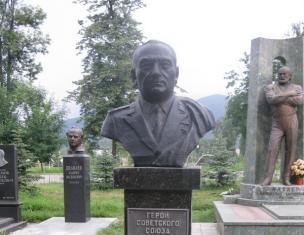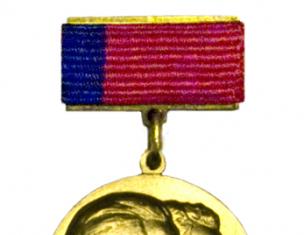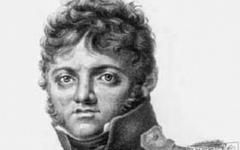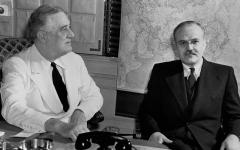Animal world incredibly rich and varied. Nevertheless, the gradual disappearance of many animal species continues every day, every minute.
Since 1600, many living organisms have become extinct. In 1627, the last aurochs was killed near Warsaw, in 1788, in the vicinity of the Commander Islands, the last sea cow was destroyed, and in 1899, the last passenger pigeon was shot in the USA.
The black market for the trade of wild animals and individual parts of their bodies flourished, and the riches of the Earth seemed inexhaustible. Many species died at the hands of poachers or simply because there was no suitable habitat left for them. A destructive process with greatest strength began to appear at the end of the twentieth century. and still going on. 1,130 species of mammals, 1,183 of birds, 296 of reptiles, 146 of amphibians, 751 of fish, 938 of mollusks, 408 of crustaceans, 10 of arachnids, 555 of insects, and many other species of invertebrate animals are at risk of extinction.
The Beiji river dolphin, western black rhinoceros, Mariana mallard, Iberian ibex, Alaotran grebe, Caribbean monk seal and some other species have left the world of wildlife forever. Over the past centuries, 83 species of mammals, 128 of birds, 21 of reptiles, 5 of amphibians, 81 of fish, 291 of mollusks, 8 of crustaceans, 72 of insects, 3 of onychophorans and 1 of turbellarians have completely disappeared from the face of the planet.
In order for people to know which living beings require serious protection measures and need help, it was created.
Red Book - official document, it contains systematic information about representatives of flora and fauna that need protection. There are international, national and regional Red Books. Usually, every country, and sometimes a region or city, has a Red Book or Red List, because the conservation of a species as a whole directly depends on its position in a specific habitat.
The International Red Book maximally reflects global trends and threats to the existence of a particular taxon on a global scale. Local Red Books and lists tell about the state of affairs in a particular population in a certain territory.
By the beginning of the 20th century. The extinction and decline of many species has become such a serious problem that an urgent solution is needed. In 1928, the International Bureau for the Conservation of Nature was created in Brussels, and in 1948 the International Union for Conservation of Nature (IUCN; IUCN) was founded. In the second year of IUCN activity, the Species Survival Commission was organized, whose members included leading scientists from many countries.
The first pilot edition of the Red Book of the World was published in 1963 in a small edition. The second, more complete edition, including five volumes, was published from 1966 to 1971. Today, IUCN unites 82 countries, 111 governmental and 800 non-governmental organizations. A huge number of scientists and research teams are working on the development and updating of the Red List; commissions on the Red Books have been created in many countries.
The author of the idea of creating the Red Book was an English researcher, one of the founders of the World Wildlife Fund, and Chairman of the Commission on Rare and Endangered Species, Peter Scott. He suggested choosing red as a symbol of anxiety, danger and at the same time the desire for life.
The giant panda was the animal that inspired Peter Scott to create the famous WWF logo.
The third edition of the Red Book began to be published in 1972, and the latest, fourth, was published from 1978 to 1980. Since 1988, an alternative option has emerged - the Red List of Threatened Species. The list is constantly updated with new information.
This list categorizes animals into nine conservation statuses. Let's look at the security categories in more detail.
EX (disappeared). Status is assigned to a species or subspecies that has not occurred in nature since the last officially recorded sighting. If the last representative dies, the species is considered extinct. Unfortunately, the list of species with this status is quite long. These include the Ivory-billed Woodpecker, Dodo, Moa, Heathered Grouse and many others.
EW (disappeared in wildlife). This status assigned to taxa that have survived only in captivity. This is the last step before the critical point. The category includes Blue Macaw, David's Deer, Saharan Oryx, etc.
CR (critically endangered or critically endangered). The highest protection category assigned to species preserved in the wild. The main criterion is an 80% reduction in numbers over three generations. This protective status was assigned to the Amur leopard, Hawaiian monk seal, black rhinoceros, and saiga.
EN (endangered or endangered species). This protection status is assigned to those species and subspecies whose numbers are critically low and whose range is shrinking. These include the Iranian fallow deer, anoa, myriki, spectacled penguin, and hyacinth macaw.
VU (in a vulnerable position). This category includes species that may be threatened with extinction in the near future. If over the last three generations the number of a species has decreased by 30%, it is assigned this conservation status. These include the red panda, paradise crane, polar bear, mandrill and many others.
Over the past 100 years, the number of spectacled penguins has decreased more than tenfold. The species has been assigned the protection status EN. This “sweet couple” still gives hope that the species will not go into oblivion
NT (close to vulnerable). Currently, the species or subspecies that have this conservation status are not on the verge of extinction, but they may become threatened in the near future. In the Red Book of the World, this status is assigned to narwhals, gray pelicans, and tomato shortmouths.
LC (Least Concern). The most optimistic security status. At the moment, these taxa are under almost no threat. But local populations or their range may be declining. These include the koala, bullfrog, little bittern, satin bowerbird and many others.
DD (not enough data)
NE (threat not assessed).
In an essay about a specific species, you can recognize it systematic position, current protection status, read description appearance, lifestyle and biology, as well as some interesting facts.
The Red Book is a kind of list that contains all species of animals and plants that, if measures are not taken, will face complete extinction. An annotated list, which is a book, is required to complete organizational tasks for the protection and registration of rare species in danger. Based on the data of the Red Book, no matter what level it is (international, national or regional), programs are formed aimed at protecting and saving certain species.
The history of the creation of the Red Book begins in 1963; it is directly related to the work of the International Union for Conservation of Nature, created in 1948.
The Chairman of the Commission on Rare Species, Peter Scott, suggested giving the publication a name - “The Red Book”. Later he became the holder and compiler of the book of the planet (the Red Book of the international level). The color red is a symbol of danger, and, of course, it is in no way connected with the red symbolism of the Soviet Union, which did not prevent the USSR for a long time from presenting itself as the initiator of the appearance of the book.
The Red Book is constantly updated with new data. By the beginning of 1980, the world knew about the release of four publications; today there are many more. Although they have a book format, they are similar to a thick desk calendar. This was designed specifically so that any sheet could be replaced with a new one. There was no need to reprint all the volumes.

Descriptions of those species whose position has stabilized after being included in the Red Book are colored green. Unfortunately, endangered animals, birds, fish, and plants are much more represented. For example, today the Red Book can tell about 305 species and subspecies of endangered mammals. Of these, the situation stabilized only in 7 species. Of the 258 species of birds (and their subspecies), only 4 have improved positions. Of the descriptions of 98 reptiles in green only 2 were painted. The situation did not improve at all for any species of fish or amphibians. Over the entire history of the Red Book, 14 species of animals have become completely extinct.

Having no legal status and not being binding, the IUCN Red Book can only help with recommendations to the governments of those countries where a particular species has a threatening situation.
At the end of 1988, MSPO created new uniform information about wild animals, which is called the “Red List of Threatened Species”, which is not an analogue of the Red Book, but performs the same function, having only different ways classifications.

2001 is the time of re-publication of the Red Book of Russia. It has already been created, adhering to the principles described in the “Red List of Threatened Species,” classifying not only by species, but also by degree of extinction. In addition, each federal subject and region publishes its own local Red Book.
The Red Army was created, as they say, from scratch. Despite this, she managed to become a formidable force and win the civil war. The key to success was the construction of the Red Army using the experience of the old, pre-revolutionary army.
On the ruins of the old army
By the beginning of 1918, Russia, which had survived two revolutions, finally emerged from the First World War. Her army was a pitiful sight - soldiers deserted en masse and headed to their homes. Since November 1917, the Armed Forces did not exist de jure - after the Bolsheviks issued an order to dissolve the old army.
Meanwhile, on the outskirts of the former empire, new war- civil. In Moscow the battles with the cadets had just died down, in St. Petersburg - with the Cossacks of General Krasnov. Events grew like a snowball.
On the Don, generals Alekseev and Kornilov formed the Volunteer Army, in the Orenburg steppes the anti-communist uprising of Ataman Dutov unfolded, in the Kharkov region there were battles with the cadets of the Chuguev Military School, in the Yekaterinoslav province - with detachments of the Central Rada of the self-proclaimed Ukrainian Republic.
Labor activists and revolutionary sailors
The external, old enemy was not asleep either: the Germans intensified their attack on Eastern Front, capturing a number of territories of the former Russian Empire.
Available Soviet government at that time there were only Red Guard detachments, created locally mainly from labor activists and revolutionary-minded sailors.
During the initial period of general partisanship in the civil war, the Red Guards were the support of the Council of People's Commissars, but it gradually became clear that voluntariness should be replaced by the conscription principle.
This was clearly shown, for example, by the events in Kyiv in January 1918, where the uprising of the working detachments of the Red Guard against the power of the Central Rada was brutally suppressed by national units and officer detachments.
The first step towards the creation of the Red Army
On January 15, 1918, Lenin issued a Decree on the creation of the Workers' and Peasants' Red Army. The document emphasized that access to its ranks is open to all citizens Russian Republic at least 18 years of age, ready to “give their strength, their lives to defend the won October Revolution and the power of the Soviets and socialism.”
This was the first, but half-hearted step towards creating an army. So far it was proposed to join it voluntarily, and in this the Bolsheviks followed the path of Alekseev and Kornilov with their voluntary recruitment of the White Army. As a result, by the spring of 1918, no more than 200 thousand people were in the ranks of the Red Army. And its combat effectiveness left much to be desired - most of the front-line soldiers were resting at home from the horrors of the World War.
A powerful incentive to create a large army was given by the enemies - the 40,000-strong Czechoslovak corps, which in the summer of the same year rebelled against Soviet power all over Trans-Siberian Railway and overnight captured vast areas of the country - from Chelyabinsk to Vladivostok. In the south of the European part of Russia, Denikin’s troops were not asleep; having recovered from the unsuccessful assault on Ekaterinodar (now Krasnodar), in June 1918 they again launched an attack on Kuban and this time achieved their goal.
Fight not with slogans, but with skill
Under these conditions, one of the founders of the Red Army, people's commissar in military and naval affairs, Leon Trotsky proposed moving to a more rigid model of army formation. According to the Decree of the Council People's Commissars On July 29, 1918, military conscription was introduced in the country, which made it possible to increase the size of the Red Army to almost half a million people by mid-September.
Along with quantitative growth, the army also strengthened qualitatively. The leadership of the country and the Red Army realized that slogans alone that the socialist fatherland was in danger would not win the war. We need experienced personnel, even if they do not adhere to revolutionary rhetoric.
So-called military experts, that is, officers and generals, began to be conscripted en masse into the Red Army. tsarist army. Their total number during the Civil War in the ranks of the Red Army was almost 50 thousand people.
The best of the best
Many later became the pride of the USSR, such as Colonel Boris Shaposhnikov, who became Marshal of the Soviet Union and chief General Staff army, including during the Great Patriotic War. Another head of the General Staff of the Red Army during World War II, Marshal Alexander Vasilevsky entered the Civil War as a staff captain.
Another effective measure to strengthen the middle command ranks were military schools and accelerated training courses for Red commanders from among soldiers, workers and peasants. In battles and battles, yesterday's non-commissioned officers and sergeants quickly rose to become commanders of large formations. Suffice it to recall Vasily Chapaev, who became a division commander, or Semyon Budyonny, who headed the 1st Cavalry Army.
Even earlier, the election of commanders was abolished, which had an extremely harmful effect on the level of combat effectiveness of units, turning them into anarchic spontaneous detachments. Now the commander was responsible for order and discipline, albeit on an equal basis with the commissar.
Kamenev instead of Vatsetis
It is curious that a little later whites also joined the conscript army. In particular, Volunteer Army in 1919, in many ways, it remained so only in name - the ferocity of the Civil War imperiously demanded that opponents replenish their ranks by any means.
He was appointed the first Commander-in-Chief of the Armed Forces of the RSFSR in the fall of 1918. former colonel Joakim Vatsetis (since January 1919, he simultaneously led the actions of the army of Soviet Latvia). After a series of defeats for the Red Army in the summer of 1919 in European Russia, Vatsetis was replaced in his post by another tsarist colonel, Sergei Kamenev.
Under his leadership, things went much better for the Red Army. The armies of Kolchak, Denikin, and Wrangel were defeated. Yudenich's attack on Petrograd was repulsed, Polish units were driven out of Ukraine and Belarus.
Territorial police principle
By the end of the Civil War, the total strength of the Red Army was more than five million people. The Red Cavalry, initially numbering only three regiments, over the course of numerous battles grew to several armies that operated on widely extended communications of countless fronts of the civil war, serving as shock troops.
The end of hostilities required a sharp reduction in numbers personnel. This, first of all, was needed by the war-depleted economy of the country. As a result, in 1920-1924. demobilization was carried out, which reduced the Red Army to half a million people.
Under the leadership of the People's Commissar for Military and Naval Affairs Mikhail Frunze, most of the remaining troops were transferred to the territorial-militia principle of recruitment. It consisted in the fact that a small part of the Red Army soldiers and unit commanders carried out permanent service, and the rest of the personnel were called up for five years for training sessions lasting up to a year.
Strengthening combat capability
Over time, Frunze's reform led to problems: the combat readiness of the territorial units was much lower than the regular ones.
The thirties, with the advent of the Nazis in Germany and the Japanese attack on China, began to smell distinctly of gunpowder. As a result, the USSR began transferring regiments, divisions and corps to a regular basis.
This took into account not only the experience of the First World War and the Civil War, but also participation in new conflicts, in particular, the clash with Chinese troops in 1929 on the Chinese Eastern Railway and Japanese troops on Lake Khasan in 1938.
The total number of the Red Army increased, the troops were actively rearming. This primarily concerned artillery and armored forces. New troops were created, for example, airborne troops. Mother infantry became more motorized.
Premonition of World War
Aviation, which previously performed mainly reconnaissance missions, was now becoming powerful force, increasing the share of bombers, attack aircraft and fighters in its ranks.
Soviet tank crews and pilots tried their hand at local wars taking place far from the USSR - in Spain and China.
In order to increase the prestige of the military profession and the convenience of serving in 1935, personal military ranks- from marshal to lieutenant.
The final line under the territorial police principle of recruiting the Red Army was drawn by the law on general military duty 1939, which expanded the composition of the Red Army and established longer service periods.
And there was a big war ahead.
For two days I have been watching the birth of a new myth about that L. Trotsky(nee Bronstein) - creator of the Red Army.
Strange, but in the two highest military educational institutions, at the department Military history, I was taught differently.
Although in our time there are many who like to rewrite history and, as they say, to paraphrase a well-known saying, every gopher fancies himself an agronomist in the field.
And now the facts.
1. On January 28 (15th old style), 1918, Vladimir Ilyich Lenin signed the decree of the Council of People's Commissars on the creation of the Workers' and Peasants' Red Army and the establishment under the People's Commissariat for Military Affairs of the All-Russian Collegium for the Organization and Management of the Red Army (" Civil war And military intervention in the USSR." Encyclopedia. M., 1983, p. 292). Podvoisky, Eremeev, Mekhonoshin, Krylenko, Trifonov, Yurenev were appointed members of this structure (ibid., p. 125)
It’s strange, but I don’t see anyone on this list who likes to catch an ice pick with Trotsky’s head. This figure at that time held the position of People's Commissar for foreign affairs
, and it is precisely his fault Treaty of Brest-Litovsk was signed on unfavorable terms for Soviet Russia. Trotsky disrupted peace negotiations with Germany, and the Germans launched an attack on Soviet Russia, where on February 23, 1918, near Pskov and Narva, they were stopped by units of the Red Army.
Further, it was the breakdown of negotiations with Germany that served as the reason for the removal of Leib Davidovich Bronstein (Trotsky) from the post of People's Commissar for Foreign Affairs. It turns out that on February 23, 1918, on a day that is symbolic for the Red Army, this Trotsky had nothing to do with the Red Army, from the word AT ALL.
2. The first People's Commissar of Defense in Soviet Russia was the old Bolshevik (party member since 1901), Russian by birth, Nikolai Ilyich Podvoisky. He held this position from December 10, 1917 to March 14, 1918. As far as I understand, March follows February both according to the old and new styles. And at this time, Trotsky was no longer even the People's Commissar for Foreign Affairs.
3. March 4, 1918, at the suggestion of V.I. Lenin, the Supreme Military Council was formed. Mikhail Bonch-Bruevich became the head of the Air Force, and accordingly Proshyan and Shutko were appointed commissars (“Civil War and Military Intervention in the USSR.” Encyclopedia. M., 1983, p. 292).
Further from the encyclopedia
In January 1918, the formation of the First Corps of the Red Army began in Petrograd. The largest part of it were St. Petersburg workers. In March 1918, this unit already included 10 battalions, machine gun and horse regiments, a heavy artillery division, a light artillery brigade, a mortar division, 3 air squads, motorcycle, engineering and automobile units, and a searchlight team. In February and March 1918, units of the corps took part in the famous battles with the Germans near Pskov and Narva, as well as at Vitebsk and Orsha (“Civil War and Military Intervention in the USSR.” Encyclopedia. M., 1983, p. 447).
The real creators of the Red Army are V.I. Lenin, N.I. Podvoisky and Bonch-Bruevich.
And uneducated peoplecan continue to raise toasts to the founder of the Red Army, Trotsky
I. Bezler
24.07.2018
P.S.
And in addition to the above, “No peace, no war, but disband the army,” on February 11, 1918, Kühlmann once again asked whether the Bolsheviks accepted the terms of peace. To this, Trotsky burst into a demagogic speech: “We no longer wish to take part in this purely imperialist war, where the claims of the propertied classes are clearly paid for in human blood.
In anticipation of that, we hope, approaching hour when the oppressed working classes of all countries will take power into their hands, like the working class of Russia, we are withdrawing our army and our people from the war. We give the order for the complete demobilization of our armies." (First world war: 1914-1918: facts, documents M. 2003. p.460) Upon returning to Petrograd, immediately, by order of Trotsky, an appeal was issued “To everyone! Everyone! Everyone!” dated 02/13/1918 with the famous demobilization order. (Military history magazine. 1991. No. 2. P. 46-48.)
And now this babble-demagogue Trotsky is called the creator of the Red Army Well, the secret DB (c)








